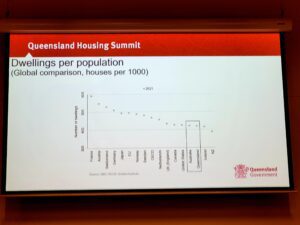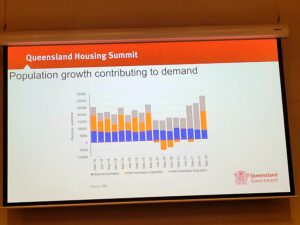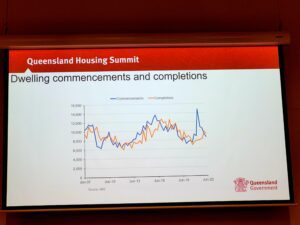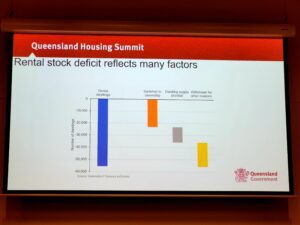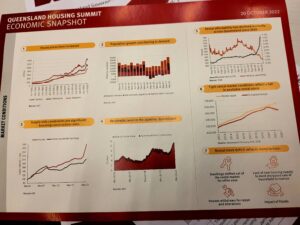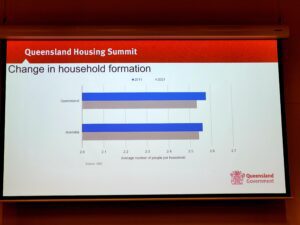The Queensland Housing Summit, held on Thursday 20 October, was called “to provide an opportunity to explore ways to work together to address challenges and meet the housing needs of Queenslanders”. It was attended by the Premier and relevant State Government Ministers, the Federal Housing Minister, Chairs of the Regional Council of Mayors, and of the LGAQ, representatives from community organisations, the property and construction sector, and MPs including myself.
Prior to the Summit the Government had announced amendments relating to the renting out of granny flats and an independent investigation into the impacts of Short-Term Accommodation (STA).
During the Summit the Government announced an additional $1b to the Queensland Housing Investment Fund for social and community housing, fast tracking of approvals for emergency housing after natural disasters and an audit of land holding suitable for housing in Queensland.
At the opening address, Linda Apelt from the University of Queensland and an ex-Director-General in the Queensland Government, noted that the search for a coordinated Australia housing approach has been going on since at least 1944 when the Commonwealth Housing Commission called for an integrated housing strategy.
The Premier, Deputy Premier and Treasurer spoke on what is well known of the contributors to our current crisis, the falling rates of home ownership, people flocking to Queensland from the southern states, natural disasters displacing residents and now the labour and materials shortages. Also of note is the falling number of persons per household, which means we need more houses for the same number of people.
From statistics supplied, Queensland appears to have around 50,000 less permanent rental properties from where it should be, with the percentages provided giving a rationale for 30,000 properties, with 20,000 unexplainable, and was termed in our workshop as ‘zombie’ properties, either taken out of the pool by owner choice or undergoing renovation. Also shown were graphs, showing supply constraints in the construction industry which means properties still not completed for occupancy that should have been, leading to extra delay in rentals coming into the pool.
The Federal Housing Minister spoke about a commitment to national housing reform with the Commonwealth, State and Territory Ministers having recently met together for the first time in nearly five years. This was good news, as well all speaking about the need of all levels of government to work together, as all have a role.
The Summit included panels and discussions involving broad ranging conversations between government, the community sector and the building and property sectors on how to improve access to housing across Queensland.
In addition, the afternoon was dedicated to workshops addressing a range of questions around the main contributors to both new homes being built (both private and social), and the rental situation, housing types, homelessness, with relevant stakeholders identified, and whether these were seen as short- or long-term solutions. These were collated and will form the base for the Outcomes Report due in the November sitting of Parliament.
There was numerous key takeout’s throughout the summit, including that we need to have regional and tailored responses across Queensland from remote and small towns to larger cities in the Southeast that acknowledges the needs of each community, that the infill of suburban areas with existing infrastructure is a lot less costly than building from scratch on greenfield sites, and that there needs to be clear targets. To watch the full Summit, head to https://www.qld.gov.au/about/queensland-housing-summit
The Premier has committed to set up a portal for public submissions in response to the Report, and we will post further information once available. In the meantime, emails to the Premier can be addressed to thepremier@premiers.qld.gov.au
Please also find my speech on the matter at the following link; https://www.bit.ly/3SJt1yp
